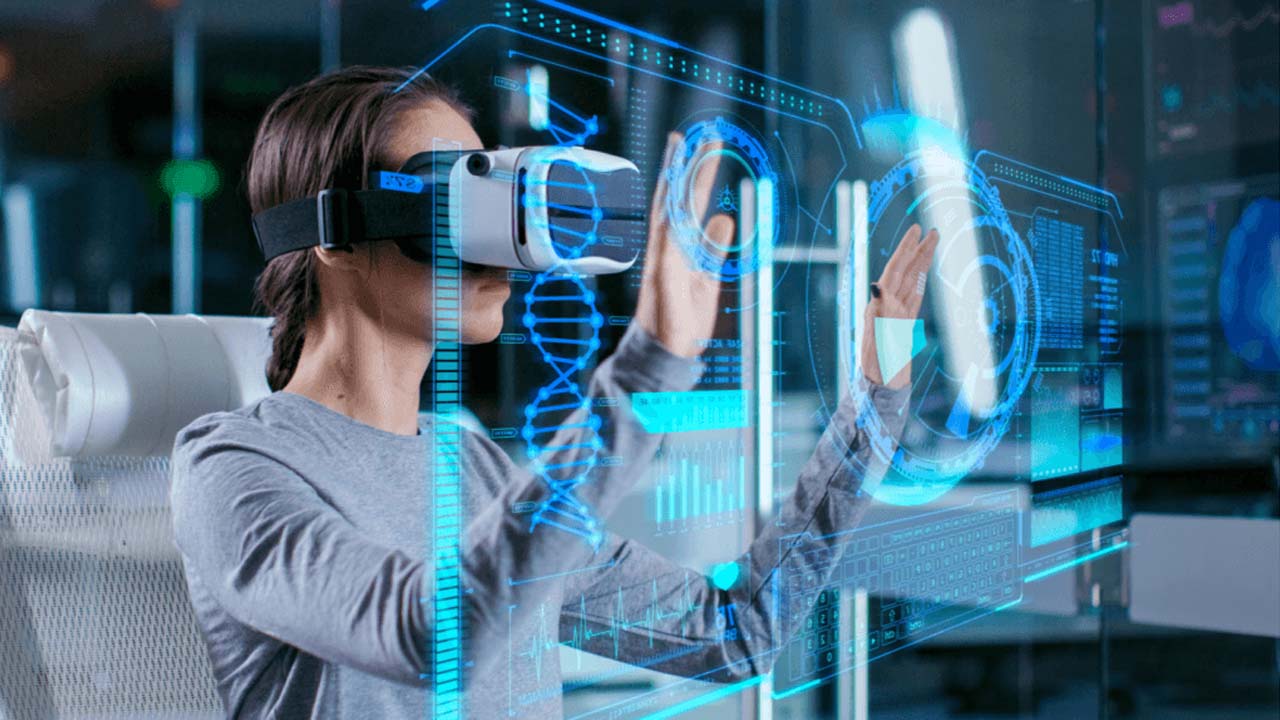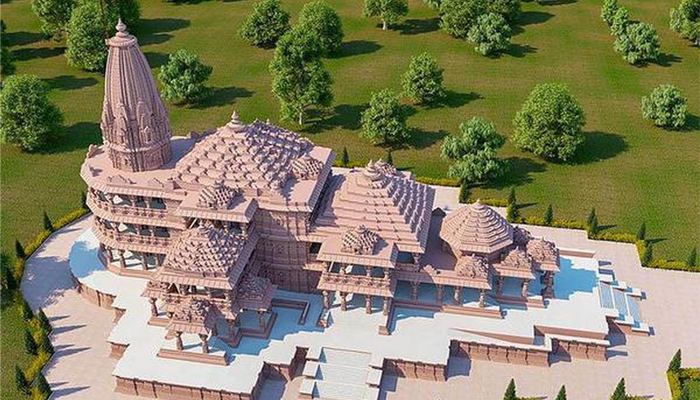So, you’ve heard about AR / VR / MR and want to know more. This is still a very theoretical and futuristic technology for most people, sometimes viewed out of Hollywood movies as the science fiction. Hologram animation, interactive displays, and virtual 3D models. Both these things do actually already happen.
Real environment transformed by computer-generated objects is present in many areas, from aviation to gaming, which we as users are simply not aware of. Have you tried to capture Pokemon in recent years or using IKEA app to suit furniture in your room? That’s AR and it has wider possible use areas. It is still under development, and it is being enhanced by multiple engineers and technology companies around the world. Meanwhile, let ‘s find out what is Augmented Reality, and let’s continue with Magic Leap ‘s vision of that. Thrilling!
What is Augmented Reality?
Increased Reality is the technology that extends our physical world, adding digital information layers to it. In contrast to Virtual Reality ( VR), AR does not create the entire artificial environment to replace real with virtual. AR works directly in an actual world, adding sounds , images, and graphics to it.
The AR is a view of the physical real-world environment, with computer-generated images superimposed, thus changing the perception of reality.
The term itself was coined back in 1990, and Television and Military were one of the first commercial uses. AR carried out its second phase with the rise of the Internet and smartphones, and is now more related to the digital model. 3D models are projected directly onto actual objects or fused together in real-time, with various virtual reality technologies influencing our behaviors, social life, and entertainment.
Typically, AR apps connect digital animation to a special ‘marker’ or identify the location with the help of GPS in phones. Augmentation is happening in real time and, for example, overlaying scores to live feed sport events within the context of the environment.
Today there are four types of augmented reality:
- markerless AR
- marker-based AR
- projection-based AR
- superimposition-based AR
AR Short History
AR in the Seventies. Myron Krueger created Videoplace in 1975-a laboratory for artificial reality. The scientist envisaged human movements engaging with the digital material. This concept was later used in some projectors, video cameras, and silhouettes on-screen.
In the 1980s AR. In 1980 Steve Mann created EyeTap, the first handheld computer intended to be worn in front of the eye. It later filmed the scene to superimpose effects on it, and showed it to a user who could also play with it via head movements. In 1987 the prototype of a heads-up display (HUD) was developed by Douglas George and Robert Morris It displayed real-life astronomical data.
In the 1990s AR. The 1990’s marked the birth of the word “augmented reality.” It first appeared in the work of researchers from Thomas Caudell and David Mizell-Boeing. In 1992 the US Air Force’s Louis Rosenberg developed an AR device called “Digital Fixtures.” In 1999, Frank Delgado and Mike Abernathy led a group of scientists to test new navigation software, which produced runways and street data from a helicopter photo.
In the 2000s AR. In 2000 Hirokazu Kato, a Japanese scientist, developed and released ARToolKit – an open-source SDK. It was later adjusted to work with Adobe. In 2004 Trimble Navigation introduced an AR system mounted on an outdoor helmet. Wikitude created the AR Travel Guide for Android mobile devices in 2008.
Today AR. In 2013 Google beta tested the Google Glass – with Bluetooth internet connectivity. Microsoft launched two brand new technologies in 2015: Windows Holographic and HoloLens (an AR goggle with lots of sensors for viewing HD holograms). Niantic launched mobile device game Pokemon Go in 2016. The app blew up the gaming industry, earning $2 million in a mere first week.
How does Augmented Reality work
For many of us, what is Augmented Reality implies a technological dimension, that is, how does AR work? A certain set of data can be used for AR (images, animations, videos, 3D models), and people can see the result in both natural and synthetic light. Also, unlike in VR, users are aware of the fact that computer vision is advanced in the real world.
AR can be viewed on various devices: computers, glasses, portable devices, cell phones, monitors with head-mounts. It includes technologies such as S.L.A.M. (simultaneous localization and mapping), depth tracking (shortly, a sensor data measuring target distance), and the following components:
- Cameras and sensors. Collecting and submitting data about the user experiences for analysis. Cameras on devices search the surroundings and a computer locates physical objects and creates 3D models with this data. As in Microsoft Hololens, it may be special duty cameras or common smartphone cameras to take pictures / videos.
- Processing. Eventually, AR devices should act like little computers, something that already modern smartphones do. These do need a CPU, a GPU, flash memory, RAM, Bluetooth / WiFi, a GPS, etc. to be able to calculate speed, angle, distance, space orientation and so on.
- Projection. It refers to a miniature projector on AR headsets which takes digital content (processing result) data from sensors and projects to a surface for viewing. In addition, the implementation of predictions in AR has not yet been completely developed to be used in consumer goods or services.
- Reflection. Some AR devices have mirrors to aid the viewing of virtual images by human eyes. Some have a “small curved mirror array” and some have a double-sided mirror which reflects light to a camera and to the eye of a user. The goal of such reflection paths is to execute a proper alignment of the image.
Augmented Reality Types
1# Marker-based AR Some also call it image recognition, since a specific visual object and a camera are needed to scan it. From a handwritten QR code to special signs it can be anything. In some instances, the AR system also calculates a marker’s location and orientation to location the material. Thus, a marker initiates user-friendly digital animations, so that images in a magazine can become 3D models.

2# Markerless AR A.k.a. location-based or position-based augmented reality, which uses a GPS, a compass, a gyroscope, and an accelerometer to provide user location based data. Then, this data decides what AR material you find or obtain in a given field. With smartphone availability this type of AR typically produces maps and directions, info about nearby businesses. Applications include events and information, pop-up business advertising, and browsing support.

3# Projection-based AR Projecting synthetic light onto physical surfaces, and allowing interaction with it in some cases. Such are the holograms we have encountered in sci-fi movies such as Star Wars. By their alterations it identifies user contact with a projection.

4# Superimposition-based AR Replaces the original view with an augmented view, in full or in part. Recognition of objects plays a crucial role, without it the whole concept is simply impossible. In the IKEA Catalog app, we’ve all seen the example of superimposed augmented reality that allows users to put virtual objects in their rooms from their furniture catalogue.

Augmented reality devices
Already many consumer devices support Augmented reality. From smartphones and tablets to gadgets such as Google Glass or handheld devices, and these technologies are evolving further. First of all, AR apps and hardware have specifications for processing and projection, such as sensors , cameras, accelerometer , gyroscope, digital compass, GPS, CPU, displays and stuff that we have already listed.
Increased reality suitable devices fall into the following categories:
- Mobile devices The most open and best suited for AR smartphone devices, ranging from pure gaming and entertainment to business analytics, sports and social media.
- Special AR devices Designed primarily and specifically for encounters with the augmented reality. One example is head-up displays (HUD) which send data directly into the user’s view to a transparent display. Initially developed to train pilots of military fighters, these tools now have applications in the aviation, automobile, engineering, sports, etc.
- AR glasses (or smart glasses) Google Glasses, Meta 2 Glasses, Laforge AR eyewear, Laster See-Thru, etc. This devices are capable of viewing your mobile alerts, assisting assembly line staff, hands-free access to content etc.
- AR contact lenses (or smart lenses) Taking Augmented Reality a step further still. Manufacturers such as Samsung and Sony have announced AR lense growth. Samsung, meanwhile, works on lenses as an accessory to smartphones, while Sony designs lenses as separate AR devices (with features such as taking pictures or storing data).
- Virtual retinal displays (VRD) Create images by splashing laser light into the human eye. With a view to vivid, high contrast and high-resolution images, these devices do need to be rendered for practical use.

Possible AR Applications
Greater realism will in many ways complement our daily activities. For example, the gaming is one of AR’s most common applications. New AR games provide players with much better experiences, some even boosting a more active outgoing way of life (PokemonGo, Ingress). Gaming grounds are being shifted from virtual spheres to real life, and players are actually doing some activities. For example, Canadian company SAGA ‘s basic gym activity for children, where cracking cubes moving on a wall kids hit it with a ball.
AR in retail may act to bring improved customer engagement and retention, brand awareness and sales. Some features can also help customers make smarter purchases-providing 3D models of any size or color with product data. Also, Real-estate can benefit from Augmented Reality by 3D tours of apartments and homes, which can also be manipulated to change certain pieces.
Other potential AR spheres include:
- Education: interactive models for the purpose of learning and training, from maths to chemistry.
- Medicine / Healthcare: Diagnosis, monitoring, train, localization etc.
- Military: Marking objects in real time, for advanced navigation.
- Art / installations / visual arts / music.
- Tourism: data on destinations, sightseeing objects, navigation, and directions.
- Broadcasting: improving the broadcasting of live events and activities by overlaying content.
- Industrial design: to visualize, calculate or model.


